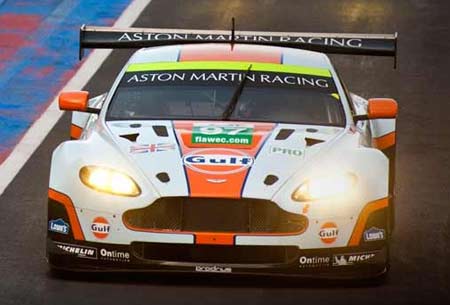GT exhausts
GT racing remains a popular form of car racing, and there are a number of successful national and international race series. The GT classes are well represented at the important Le Mans 24 Hour race - indeed, GT racing seems to have become more popular at the expense of the Prototypes. The racing is close, the drivers are top quality, and car manufacturers are keen to support this kind of competition.
GT racing is characterised by long races, and 24-hour events are a popular format. The old racing adage that "to finish first, you must first finish" is one that emphasises reliability, and endurance racing often rewards reliability as much as pure speed. In this regard, the production car exhaust systems are replaced with items that are designed both to enhance performance and improve durability. Such systems are often much lighter than the production car version too.
The basic functions of an exhaust system are to duct burnt gases to somewhere convenient and to provide a degree of tuning to help improve engine efficiency. Roadcar exhaust systems are very often not simply a collection of tubes; evermore stringent legislation dictates complex silencing arrangements and emissions control. The natural desire of the car manufacturer to provide their GT cars with stupefying levels of performance means that the exhaust systems are sometimes equipped with valve arrangements to control noise and driveability.
This technology has been with us for a long time. Yamaha first used its EXUP valve on road motorcycles in 1987, and it continues to supply engines thus equipped. The valves in the exhaust system restrict flow and reduce noise at low engine speeds and part throttle, and then the valve opens at higher engine speeds and throttle openings. This means that road-legal GT cars can be driven relatively quietly in urban areas.
However, emissions control and driving refinement do not carry the same priority for the GT race team, so such systems are often dispensed with in the interests of mass reduction and reliability. The silencers required to meet a 110 dB noise limit for racing are far less restrictive than those required to comply with roadcar legislation, and large, heavy catalyst monoliths ('bricks') designed to improve exhaust gas emissions are also superfluous. Valves in the exhaust system to control noise and improve driveability are simply seen as excess weight and providing an unnecessary risk to reliability.
The Ferrari 458 Italia and the Aston Martin Vantage - beautiful examples of the current crop of cars used with success in GT racing - have catalysts and valves in the standard exhaust system on the production car. Catalysts often negate the requirement for further silencing, so in removing the catalyst bricks it is usually necessary to introduce a silencer/silencers that weren't originally part of the exhaust.
The effect of removing such items is to make the exhaust system much lighter, and this in itself provides opportunity for further lightening. By removing unwanted mass and through the use of improved materials for construction, the exhaust system can be made from thinner tubes without compromising reliability.

Fig. 1 - The Aston Martin Vantage GT racer is based on a roadcar with a complex exhaust system (Courtesy of Aston Martin)
Written by Wayne Ward